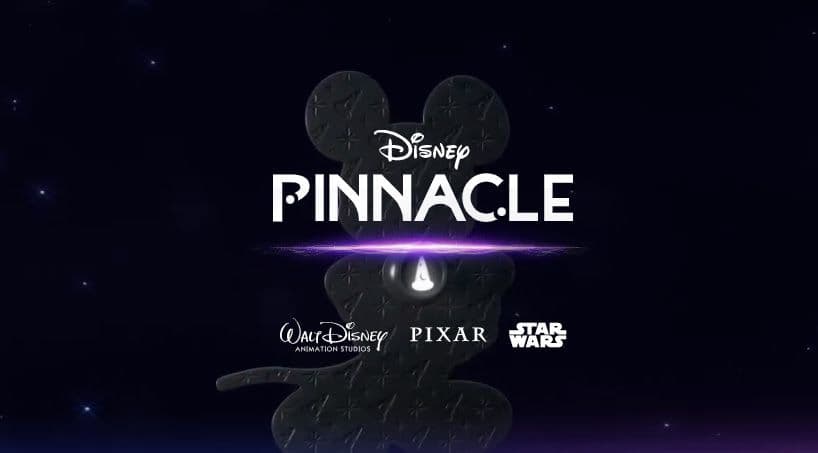According to a recent analysis from Sam Barberie, Disney is taking a distinct approach to customer loyalty and engagement by incorporating digital collectibles and web3 infrastructure into its broader ecosystem. With one of the most expansive intellectual property portfolios in the world, Disney has long operated through various business arms—ranging from film and television to theme parks, cruises, merchandise, and resorts. Historically, these divisions functioned independently, with limited interconnection between consumer experiences. A person who watched Disney content on a streaming platform might be more inclined to visit a park, but there was no formal link between those experiences.

How Disney Is Using Digital Collectibles
How Disney Is Using Digital Collectibles
Recent changes to Disney+, particularly the introduction of the “Always On” Perks platform, signal a new strategy aimed at connecting these separate channels through a unified loyalty approach. Disney+ subscribers now receive access to various promotional offers and benefits, many of which are connected to other Disney business units. These include sweepstakes for Disney Cruise experiences, retail discounts for Disney-branded merchandise at major partners, and even logistical perks like Clear memberships for easier travel to Disney destinations. The goal appears to be encouraging broader engagement within the Disney ecosystem by tying everyday digital engagement to physical and branded experiences.

How Disney Is Using Digital Collectibles
Digital Collectibles in Disney’s Loyalty Program
Among the more novel features included in the Disney+ Perks platform is the introduction of digital collectibles. In partnership with web3 company Dapper Labs, Disney launched its first blockchain-based digital “pins” under the Disney Pinnacle brand. These initial offerings were similar to past NFT efforts by other brands—licensed digital products sold to fans and collectors with limited integration into broader consumer experiences. However, by making these assets accessible through Disney+, the company is beginning to hint at a more comprehensive use of digital goods within its loyalty efforts.
While many casual consumers may not immediately notice the significance of these digital collectibles, their inclusion within a flagship loyalty program shows that Disney may be looking to evolve digital assets into core components of fan engagement. The use of blockchain allows for secure, decentralized ownership of digital items that could, in the future, carry utility across Disney’s many platforms—streaming, parks, retail, gaming, and more.

How Disney Is Using Digital Collectibles
Leveraging Blockchain in the Disney Ecosystem
The introduction of a unified MyDisney account marked the company’s first step toward centralizing user data and engagement across its different businesses. Before this, users often maintained separate accounts for different services, such as Disney+, the Disney Store, or Walt Disney World. Blockchain technology offers an even more efficient solution. Rather than requiring deep technical integration between different business units, blockchain allows Disney to tie user activity and ownership to a single wallet address. This could facilitate personalized rewards, cross-platform engagement, and partner integrations without significant backend restructuring.
For example, a user who holds a particular digital collectible in their wallet could receive discounts at a physical store, access to exclusive content on Disney+, or special in-game items in a Disney-licensed video game. These use cases demonstrate the potential for a more connected and versatile loyalty framework, driven by ownership of blockchain-based assets rather than siloed user accounts.

How Disney Is Using Digital Collectibles
Comparing Disney’s Strategy with Netflix's
Netflix has also started experimenting with experiences beyond streaming, such as licensed merchandise, gaming, and even physical locations like the upcoming “Netflix Houses.” However, it has yet to develop a cohesive loyalty or engagement strategy that connects these elements. Despite its advantages as a smaller and more digitally native company, Netflix’s efforts remain fragmented, with little in the way of cross-platform incentives or engagement loops.
Disney, by contrast, appears to be laying the groundwork for a unified ecosystem where IP is not only central but also mobile across different experiences. The company has a longstanding history of nurturing multi-generational fandoms and understands the commercial potential of deep fan loyalty. Digital collectibles allow Disney to build on this legacy by offering new ways for fans to connect with content, products, and experiences, all while generating additional revenue and data insights.

How Disney Is Using Digital Collectibles
What Digital Loyalty Could Look Like in Practice
The concept of using a single digital collectible to unlock multiple touchpoints within the Disney ecosystem illustrates how powerful this approach could become. A digital item tied to a specific franchise, such as Star Wars, could act as a dynamic marketing tool, retail coupon, streaming incentive, and in-game asset all at once. This would give fans tangible reasons to engage with various Disney properties and would create a more cohesive brand experience.
Such use cases also open the door to new revenue opportunities, including resale royalties on digital collectibles, premium perks, and partner-sponsored benefits. These assets could become both tools for engagement and channels for monetization, all while reducing friction between different Disney services and third-party partners.

How Disney Is Using Digital Collectibles
The Future of Digital Loyalty at Disney
Looking forward, Disney may continue to expand its investment in digital loyalty infrastructure. One possible development is the introduction of an official Disney wallet tied to the MyDisney account system. This wallet could consolidate all digital assets, from streaming perks to collectibles, into a single interface. Over time, Disney might explore even broader innovations, such as a branded digital currency usable across all Disney properties worldwide.
Such a move would further streamline consumer interactions and spending within the Disney ecosystem, creating a consistent and seamless experience no matter the platform or location. While these ideas remain speculative, the foundation is already being laid through the integration of web3 technologies into existing consumer-facing platforms like Disney+.
Source: Sam Barberie



